رمز الجلسة المميّز هو جزء من البيانات (UUID) يُستخدَم في طلبات REST لتحديد جلسة، وهي سلسلة من عمليات تبادل الرسائل ذات الصلة. يجب تضمين رمز مميّز للجلسة في جميع الطلبات المتعلقة بـ "المربّعات الثنائية الأبعاد" وصور "التجوّل الافتراضي".
يتم تضمينها كقيمة للمَعلمة session الملحقة بجميع عناوين URL الخاصة بالطلبات.
في Map Tiles API، يمثّل رمز الجلسة مجموعة محدّدة من خيارات العرض. وهذا يعني أنّه ليس عليك تمرير مجموعة من خيارات العرض مع كل طلب لعرض مربّع. يمكنك استخدام رمز الجلسة نفسه على عدة أجهزة عميل.
يكون الرمز المميز للجلسة صالحًا حاليًا لمدة أسبوعَين من وقت إصداره، ولكن قد يتغيّر ذلك. يمكنك دائمًا التحقّق من وقت انتهاء صلاحية رمز الجلسة من خلال الاطّلاع على الحقل expiry في رسالة الردّ.
طلب الرمز المميز للجلسة
لطلب رمز مميّز للجلسة، أرسِل طلب HTTPS POST إلى نقطة النهاية createSession
كما هو موضّح في المثال التالي. يجب إرسال الطلب مع عنوان Content-Type: application/json.
curl -X POST -d '{ "mapType": "streetview", "language": "en-US", "region": "US" }' \ -H 'Content-Type: application/json' \ "https://tile.googleapis.com/v1/createSession?key=YOUR_API_KEY"
حقول مطلوبة
mapTypeنوع الخريطة الأساسية. يمكن أن تكون هذه القيمة واحدة مما يلي:
roadmap- مربّعات الخرائط المرسومة العادية في "خرائط Google"
satellite- صور القمر الصناعي:
terrain- صور التضاريس عند اختيار
terrainكنوع الخريطة، يجب أيضًا تضمين نوع الطبقةlayerRoadmap(الموضّح في قسم الحقول الاختيارية). streetview- صور بانورامية من Street View. لمزيد من المعلومات، راجع بلاطات عرض الشارع.
languageعلامة لغة IETF التي تحدد اللغة المستخدمة لعرض المعلومات على المربعات. على سبيل المثال، يحدّد الرمز
en-USاللغة الإنجليزية كما يتم التحدّث بها في الولايات المتحدة.regionمعرف منطقة مستودع بيانات الموقع المشترك (حرفان كبيران) يمثل الموقع الفعلي للمستخدم. مثلاً:
US
الحقول الاختيارية
imageFormat- تحدّد هذه السمة تنسيق الملف الذي سيتم عرضه. القيم الصالحة هي
jpegأوpng. لا تتوافق ملفات JPEG مع الشفافية، لذا لا يُنصح باستخدامها مع مربّعات التراكب. إذا لم تحدّدimageFormat، سيتم تلقائيًا اختيار أفضل تنسيق للمربّع. scaleتزيد هذه السمة حجم عناصر الخريطة (مثل تصنيفات الطرق)، مع الاحتفاظ بحجم المربّع ومساحة التغطية للمربّع التلقائي. تؤدي زيادة المقياس أيضًا إلى تقليل عدد التصنيفات على الخريطة، ما يقلّل من الازدحام. في ما يلي قيم
scaleالصالحة:scaleFactor1x: القيمة التلقائية-
scaleFactor2x: يضاعف حجم التصنيف ويزيل تصنيفات المعالم الثانوية. -
scaleFactor4x: يضاعف حجم التصنيف أربع مرات ويزيل تصنيفات الميزات الثانوية.
توضّح الأمثلة التالية تأثير تغيير حجم عناصر الخريطة.
| عامل التحجيم 1x | عامل التحجيم 2x |
|---|---|
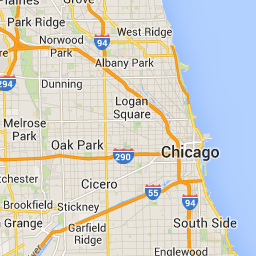 |
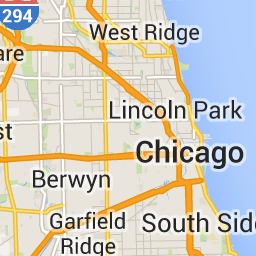 |
highDpi- تحدّد هذه السمة ما إذا كان سيتم عرض مربّعات بدقة عالية. في حال زيادة عامل المقياس، يتم استخدام
highDpiلزيادة حجم المربّع. في العادة، تؤدي زيادة عامل القياس إلى تكبير المربّع الناتج إلى صورة بالحجم نفسه، ما يؤدي إلى خفض الجودة. باستخدامhighDpi، يزداد الحجم الناتج أيضًا، ما يحافظ على الجودة. يشير مصطلح DPI إلى "النقاط في البوصة"، ويعني مصطلح High DPI أنّ المربّع يتم عرضه باستخدام عدد أكبر من النقاط في البوصة مقارنةً بالحالة العادية. إذا كانت القيمةtrue، يتم ضرب عدد وحدات البكسل في كل من البُعدَين x وy في عامل القياس (أي 2x أو 4x). لن تتغيّر منطقة تغطية البلاطة. لا تعمل هذه المَعلمة إلا مع قيمscaleالتي تبلغ 2x أو 4x. ليس لهذا الإعداد أي تأثير في المربّعات ذات المقياس 1x.
| عامل التحجيم 1x | عامل التحجيم 2x High DPI |
|---|---|
 |
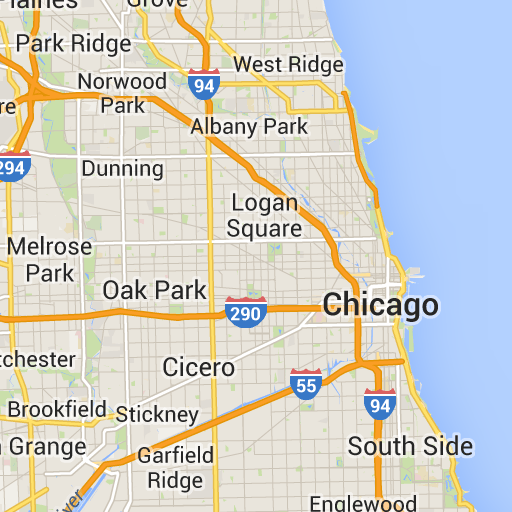 |
layerTypesمصفوفة من القيم تحدّد أنواع الطبقات التي تمت إضافتها إلى الخريطة. القيم الصالحة هي:
layerRoadmap- مطلوبة إذا حدّدت
terrainكنوع الخريطة. يمكن أيضًا عرضها بشكل اختياري على نوع الخريطةsatellite. لا يؤثّر ذلك في مربّعات لوحة بيانات تقدم العمل. layerStreetview- تعرض الشوارع والمواقع الجغرافية التي تتوفّر فيها ميزة "التجوّل الافتراضي" باستخدام خطوط زرقاء على الخريطة.
layerTraffic- تعرِض هذه السمة حالة حركة المرور الحالية.
stylesمصفوفة من عناصر نمط JSON التي تحدد المظهر ومستوى التفاصيل لعناصر الخريطة، مثل الطرق والحدائق والمناطق المبنية. يتم استخدام التنسيق لتخصيص خريطة Google الأساسية العادية. لا تكون المَعلمة
stylesصالحة إلا إذا كان نوع الخريطةroadmap. للاطّلاع على بنية الأنماط الكاملة، يُرجى الرجوع إلى مرجع الأنماط.overlayقيمة منطقية تحدّد ما إذا كان يجب عرض
layerTypesكطبقة منفصلة أو دمجها مع الصور الأساسية. عندما تكون قيمةtrue، لا يتم عرض الخريطة الأساسية. إذا لم تحدّد أيlayerTypes، سيتم تجاهل هذه القيمة.
على سبيل المثال، سيؤدي طلب نوع خريطة satellite مع طبقة layerRoadmap وضبط overlay على false إلى عرض مربّعات مكافئة لنوع الخريطة hybrid المستخدَم في Maps JavaScript API (الصورة على اليمين). يؤدي استخدام أنواع الخرائط والطبقات نفسها مع ضبط overlay على true إلى إنشاء مربّع شفاف مع خريطة متراكبة، ويتم تنسيقه بشكل مناسب للتراكب على صور الأقمار الصناعية (الصورة على اليسار).
overlay: false |
overlay: true |
|---|---|
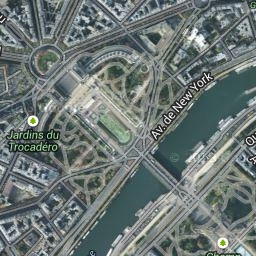 |
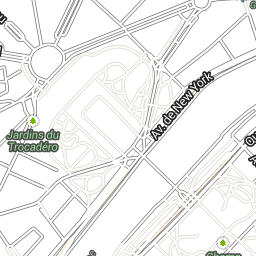 |
في ما يلي مثال على نص طلب نموذجي يحتوي على الحقول المطلوبة والاختيارية.
{
"mapType": "satellite",
"language": "en-US",
"region": "us",
"layerTypes": [ "layerRoadmap", "layerStreetview" ],
"overlay": true,
"scale": "scaleFactor1x",
"styles": [
{
"stylers": [
{ "hue": "#00ffe6" },
{ "saturation": -20 }
]
},{
"featureType": "road",
"elementType": "geometry",
"stylers": [
{ "lightness": 100 },
{ "visibility": "simplified" }
]
}
]
}
يقدّم هذا المثال طبقة متراكبة مناسبة للدمج مع صور الأقمار الصناعية. يحتوي المثال على خارطة طريق وطبقة عرض فوقي لصور الشارع. يتم عرض الخريطة الناتجة بالأسماء والبيانات باللغة الإنجليزية، كما يتم التحدث بها في الولايات المتحدة.
ردّ الرمز المميز للجلسة
في ما يلي مثال على نص استجابة بتنسيق JSON.
{
"session": "IgAAAHGU9jnAU4KOAfwY3Bcd6eH_WxQsyocSBAdUnAr9pnvTTNXtF9c_27RBo94ytEXTDg",
"expiry": "1361828036",
"tileWidth": 256,
"tileHeight": 256,
"imageFormat": "png"
}
تحتوي القائمة التالية على تعريفات للحقول في نص الاستجابة.
session- قيمة رمز مميّز للجلسة يجب تضمينها في جميع طلبات Map Tiles API.
expiry- سلسلة تتضمّن الوقت (بالثواني منذ بدء حساب الفترة) الذي تنتهي فيه صلاحية الرمز المميّز. يكون رمز الجلسة صالحًا لمدة أسبوعَين من وقت إنشائه، ولكن قد تتغير هذه السياسة بدون إشعار.
tileWidth- عرض المربّعات بالبكسل
tileHeight- تمثّل هذه السمة ارتفاع المربّعات بالبكسل.
imageFormat- تنسيق الصورة، ويمكن أن يكون
pngأوjpeg

